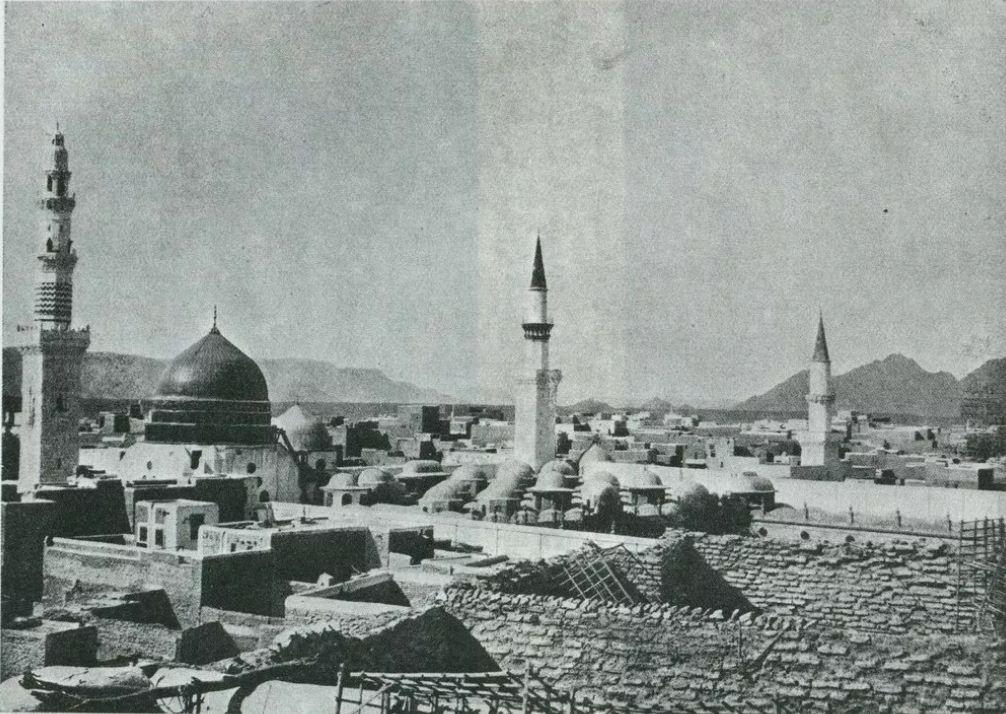The Development of the Prophet's Mosque

The story of the Prophet’s Mosque began when he (may Allah’s salah and salam be upon him) set foot in Madinah. It has witnessed the passing of time as well as the continuation of Iman. The mosque was built in the first year of the Hijrah, covering an area of 1,050 square metres. It was then expanded to 1,425 square metres by the Prophet after his return from Khaybar in 7 AH.
Expansions continued under the Prophet’s rightly guided successors. During the reign of ‘Umar ibn al-Khattab (may Allah be pleased with him) in 17 AH, the area increased by 1,100 square meters. Similarly, during the reign of ‘Uthman ibn 'Affan (may Allah be pleased with him) in 29-30 AH, it was expanded by 496 square metres. Islamic architecture reached its peak during the reign of Walid ibn ‘Abdil-Malik, who added 2,369 square metres between 88-91 AH. Efforts continued during the ‘Abbasi era under al-Mahdi, and under the reigns of Sultan Qaitbay and Sultan ‘Abdul-Majid, with hundreds of square metres added at each stage.
With the advent of the Saudi era, the Prophet's Mosque underwent significant transformation thanks to the attention given by the wise leadership of the Kingdom of Saudi Arabia, making it a focal point for care and concern. King ‘Abdul-‘Aziz (may Allah have mercy on him) took the first steps in expanding the mosque in 1372 AH, by adding 6,024 square metres. This journey continued under the reign of King Fahd (may Allah have mercy on him), who made a groundbreaking expansion in 1405 AH, increasing the mosque's area to 98,500 square metres, reflecting the Kingdom's commitment to meeting the needs of visitors and worshippers.

The focus was not only on expanding the space but also on aesthetics and infrastructure. Modern shading umbrellas were added to cover the courtyards of the mosque, protecting worshippers from the sun, and a central air conditioning system was developed. Additionally, the old structure, including the Green Dome and the Prophet's Mihrab, was restored, blending authenticity with modernity.
Today, the capacity of the Prophet's Mosque exceeds one million worshippers during peak times, and it has become a beacon that unites hearts from all corners of the Islamic world. It stands as a testament to the richness of history and the beauty of the present, while looking forward to a future in which care and attention to this sacred religious landmark continue.